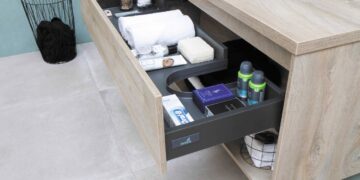Meyer lemon trees are a beautiful addition to any home. The trees aren’t too big and tend to be less bitter than other lemons, which makes them perfect for baking, cooking, crafting cocktails, or just snacking on fresh slices. In fact, Meyer lemons have been one of my family’s favorite kitchen staples ever since my grandmother bought me a Meyer lemon tree over a decade ago. Now that I’m all grown up in my own place, I’ve decided to expand my citrus collection by growing new trees from seed. Are you interested in learning more about how I did it? Read on!
Gather the needed materials
The first thing you’ll need is the seeds. You can find these at many nurseries and home-improvement stores, or if you are a gardener, you may have some of your own that you can use. The best time to plant them is when the weather has cooled down and the leaves have begun to fall from the trees.
Remove any pulp from the seeds
You can remove the pulp from your seeds in one of several ways. If you don’t mind getting a little messy, simply grasp the seed between your fingers and pull it away from the pulp. Alternatively, use a spoon to scrape off any remaining pulp on that side of the seed. You can also use a paper towel to rub off excess pulp or use a toothpick or knife to gently pry it off. Finally, use a fork to scrape away any remaining bits of fruit if needed!
Water the soil as needed, and cover the pot with plastic wrap
After you’ve planted your seeds, it’s time to water them! You will want to water the soil as needed. This means watering when the top inch of soil feels dry and not before that point. It can be hard to know when exactly this is without feeling the soil every day or two, but generally speaking, if you’re using a regular pot with good drainage holes in the bottom and no other plants growing nearby that might steal moisture from yours (like basil or mint), once every 2-3 days should be fine if you live in an area where there isn’t much rain during this time of year. If not—or if it rains regularly—you may even want to water twice a day until everything starts growing properly.
For those who use larger pots or ones with fewer drainage holes (like terracotta), the watering frequency will vary depending on how much extra moisture gets trapped inside them each time they are watered. The best way to find out what works best for your particular situation is by experimenting: start off with twice-daily watering and see how quickly things grow; decrease this amount based on how fast they grow until your plant seems happy with only being watered once per week (you will have some variation here depending on weather conditions). It’s also important not only because different plants need varying amounts of water but because Meyer lemon trees prefer sandy soils so any excess standing around could become stagnant over time which could lead
Remove the plastic wrap and place your pot in a sunny spot
Remove the plastic wrap from your pot and place it in a sunny spot. Water as needed, but don’t overwater. Allow for good drainage by watering until water runs out of the bottom of the pot, then allow to dry before watering again.
Once the seedlings have reached about 2 inches tall, transplant them into individual pots filled with potting or garden soil. Lemon tree seedlings are prone to damping off disease, so make sure the top of the soil is kept dry.
Once the seedlings have reached about 2 inches tall, transplant them into individual pots filled with potting or garden soil. Lemon tree seedlings are prone to damping off disease, so make sure the top of the soil is kept dry. Keep in a warm area out of direct sunlight until they have reached a height of 6 to 8 inches, at which point they will be ready for planting outdoors.
Give your new little trees plenty of water, but don’t overwater them. Let them almost dry out before watering again.
It’s important to give your tree plenty of water, but not too much. Don’t overwater the soil, but don’t let it dry out completely either. Letting the top layer of soil becomes dry is a good indication that you need to water again. To ensure proper watering, use a watering can rather than just pouring in water from the faucet—this will help control how much water gets into the soil and prevents flooding or run-off. Watering should be done in the morning or evening when temperatures are cool (under 75 degrees F) so that evaporation doesn’t cause moisture loss due to hot weather conditions during daylight hours.
You can grow a Meyer lemon tree all by yourself at home!
You can grow a Meyer lemon tree all by yourself at home! All you need is some space, some sun, and a bit of patience. It’s simple:
- First, make sure the temperature outside is between 60-80 degrees Fahrenheit during the day.
- Next, fill up an 8-inch pot with premium potting soil and water it until it’s moist but not soggy. Then place two seeds inside the center of your pot and cover them with more soil until only half of each seed remains exposed above ground level.
- After checking on your seedlings every day for about three weeks (or when they’re about 3 inches tall), remove both of them from their pots and plant them in larger containers so they have enough room to grow without crowding each other out! Once transplanted into bigger pots; water, as needed until established plants, begin putting out new growth leaves at least every few days (depending on conditions). If left unwatered for too long, however; root systems will begin dying off which could kill entire trees if not treated immediately!
Conclusion
Now that you have learned about growing a Meyer lemon tree from seed, we hope you will be able to do it successfully. If you have any questions or comments, please feel free to leave them in the section below. We always love hearing from our readers!
























